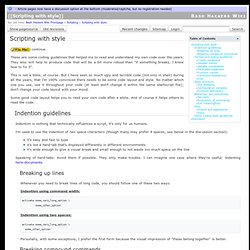

Open Source Windows. PXEInstallServer. Introduction This will guide you through running an Ubuntu server as PXE install server.

You'll need to run a DHCP server on your network, not necessarily this server but you do need one. Installing needed packages You'll need to install the following packages inetutils-inetd (previously netkit-inetd), tftpd-hpa (see InstallingSoftware). For Ubuntu 10.04, there is a bug with inetutils-inetd. If this is also going to be your DHCP server, install dhcp server contained in the follwing package: dhcp3-server (see InstallingSoftware) Configure tftpd-hpa You'll need to tell tftpd-hpa to start its daemon (which it doesn't by default).
#Defaults for tftpd-hpa RUN_DAEMON="yes" OPTIONS="-l -s /var/lib/tftpboot" Then, run the startup script to actually start the daemon /etc/init.d/tftpd-hpa restart Configure dhcpd If your pxe server is also your dhcp server, you'll need something like this in /etc/dhcp3/dhcpd.conf Be sure to restart your dhcp server so that the changes take effect Install apache. Your own movie database in 5 minutes with IMDb API and Perl - Bob Belderbos / Software Developer. In this post I will show you how you can easily import IMDb data for your movies and process the XML to get SQL for database import. From there you can start to build your movie site. IMDb API In this post I use a small DVD collection. The movie data (director, actors, year published, etc.) are from IMDb and thanks to IMDb API (Brian Fritz), you get the data easily via curl. At the end of this post you can see a 5 min video demo of the whole process.
How it works First I create a database and insert the movie collection table The script getMovieData.pl serves to import the movie data from the API with curl and converts the XML to SQL. Conclusion In 3 simple steps you get a complete set of data for each movie title, in a standardized format. An example in PHP. ✿ Our favorite set — CopyPasteCharacter.com. Unfurlr. Qlock - World Clock. Google Url Shortener. Posted by Michael Hermanto, Software Engineer, Firebase We launched the Google URL Shortener back in 2009 as a way to help people more easily share links and measure traffic online.

Since then, many popular URL shortening services have emerged and the ways people find content on the Internet have also changed dramatically, from primarily desktop webpages to apps, mobile devices, home assistants, and more. To refocus our efforts, we're turning down support for goo.gl over the coming weeks and replacing it with Firebase Dynamic Links (FDL). FDLs are smart URLs that allow you to send existing and potential users to any location within an iOS, Android or web app. We're excited to grow and improve the product going forward. For consumers Starting April 13, 2018, anonymous users and users who have never created short links before today will not be able to create new short links via the goo.gl console. After March 30, 2019, all links will continue to redirect to the intended destination. Web Screenshots - Take a Screen Capture Online. Instant screencasts: Just click record.
Perl Guru Forums: Perl Programming Help: Frequently Asked Questions. Scripting with style. - Article pages now have a discussion option at the bottom (moderated/captcha, but no registration needed) continue These are some coding guidelines that helped me to read and understand my own code over the years.

They also will help to produce code that will be a bit more robust than "if something breaks, I know how to fix it". This is not a bible, of course. But I have seen so much ugly and terrible code (not only in shell) during all the years, that I'm 100% convinced there needs to be some code layout and style. Some good code layout helps you to read your own code after a while. Indention guidelines Indention is nothing that technically influences a script, it's only for us humans. I'm used to use the indention of two space characters (though many may prefer 4 spaces, see below in the discussion section): Speaking of hard-tabs: Avoid them if possible. Breaking up lines Whenever you need to break lines of long code, you should follow one of these two ways: Indention using command width: #!
Code University - Home.
IT. Ubuntu. Programing. Internet.